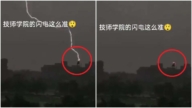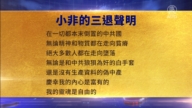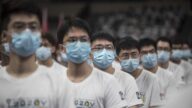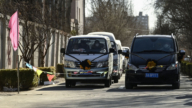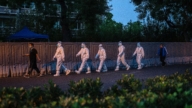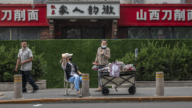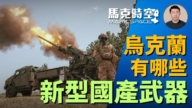【新唐人2013年06月20日訊】由於中國作家巴金對「文革」的懺悔與反省,曾經建議成立「文革博物館」,以讓後人記住這段歷史並從中吸取教訓。但是,中國第一座文革博物館直到14年前,在廣東省汕頭市一個小山頭上才悄悄破土動工。它的存在,中共當局從未批准。它的建成,完全依靠前汕頭市副市長彭啟安。
彭啟安從1983年開始擔任汕頭市副市長,十年內負責了許多大型項目的建設,包括汕頭著名的海灣大橋。1996年的某一天,他去位於塗城村的塔山風景區,看到了山坡上一片亂墳。他才得知,這裡埋著71位「文革遇難者」。
彭啟安突發奇想:能不能建一個紀念性的建築?他是實幹家,立即得到十多名「廳級」老幹部和當地老人的支持,成立了「長老院」。塗城村委大多經過「文革」迫害,也很快劃出塔山上的土地,讓彭啟安建設。
在這塊佔地300畝被稱為「塔園」的「文革博物館」裡面,矗立著前中共領導人劉少奇和葉劍英的塑像。對面圍欄上刻著「文革」百種酷刑,讀來讓人不寒而慄。它們背後,是石壁上近萬名「文革」死難者的名字。
彭啟安告訴《新唐人》,建立「文革博物館」就是用歷史教訓後人,千萬不要讓「中國文化大革命」的悲劇重演。
前汕頭市副市長彭啟安:「中國自1986年巴金先生提出建立文化大革命博物館到今天,中國共產黨執政者沒有表態,沒有支持,中國到現在沒有一個文化大革命博物館。你從這裡就可以理解,我們塔園文革博物館,我們一直到現在沒有證明,只是民間的活動。得不到國家正式的支持,那你的困難你就可以理解了。」
彭啟安表示,他對文革博物館「不求正名,只求存在」。
彭啟安:「既然沒有地方接受我們項目批准,就不能……用地不能發展。既然不能發展,就只求存在。我們經過17年社會各個方面的支持,社會民間正義力量的支持,把我們文革博物館建成8個景區,25個景點。希望現在已經建成的景點能夠保存下來,能夠存在,所以只求存在。」
2005年,彭啟安邀請當時的汕頭市委書記,現任廣東省委常委林木聲參觀博物館。林木聲當時表示讚賞,並準備開會給予支持。彭啟安以為終於盼到正名的這一天。但是過了一個多月,中央高層派人來調查。
彭啟安:「後來上面高層也知道了。他給我們定出的調子是不了了之。就是說,你既然建了,也只能讓你存在。但是不要宣傳。」
彭啟安表示,建設文革博物館的阻力,主要是中共如何評價毛澤東的問題。因為文化大革命的罪魁就是毛澤東。那麼,建立文革博物館,必然要披露毛澤東的問題。但是中共現在還是維護毛澤東的形象。
彭啟安說,他在文化大革命期間被打成走資派,挨過大大小小300多場批鬥。雖然建立「文革博物館」很有壓力,但是他已經沒有甚麼可怕的了。因為他的命已經延長多年。
彭啟安:「我原來已經被定槍斃,五個人我排第二。後來遞到省革委會去,不知道甚麼原因省革委會沒有批。假如有槍斃,是1968年槍斃,到現在44年了。所以我這個老命已經拖後40多年了。」
彭啟安呼籲中共,今後不要再搞那些亂七八糟的政治運動。
有人說,今年已經82歲的彭啟安如果走了,博物館也完了。但是彭啟安相信,黎明前的黑暗即將過去,曙光終會到來。
採訪編輯/秦雪 後製/蕭宇
Private Project: China’s First Cultural Revolution Museum
Chinese writer, Ba Jin, has suggested that
the Chinese Communist Party (CCP) authorities
establish a Cultural Revolution museum.
It would enable future generations to remember
the history of this event and to learn from it.
In actual fact, the construction of China’s first museum
didn’t start until 14 years after the Revolution.
It is located on a hilltop in Shantou,
Guangdong province,
The understated project, however, has never been
approved of by the CCP authorities.
It was completed by Peng Qian, Shantou’s ex-vice mayor,
with the aid of the judiciary.
Peng Qian served as vice mayor of Shantou City in 1983.
He took charge of large construction projects
during his ten-year tenure.
In 1996, he was incidentally informed of
the existence of a mound,
in this mound were buried 71 local victims of
the Cultural Revolution.
This inspired Peng to build a monumental building.
His project was supported by over a dozen retired cadres
and by local senior citizens.
The construction site was located on Tashan,
a local hilltop.
The 49-acre Cultural Revolution Museum
was named as “Ta Park".
Inside the building stand the statues of
ex-CCP leaders Liu Shaoqi and Ye Jianying.
Engraved on the opposite stone wall is
an account of 100 kinds of torture,
these tortures were used during Cultural Revolution.
On the back wall are the names of thousands of victims.
Peng Qian says that the Cultural Revolution Museum
was built to educate future generations with historical lessons.
It can remind the public that it mustn’t repeat the mistake
of the tragedy of the Chinese Cultural Revolution.
(Ex-deputy mayor, Shantou) Peng Qian: “Mr. Ba Jin proposed
the setting -up of a Cultural Revolution Museum in 1986.
But over the years,
the CCP has withheld its opinions of this museum.
So until today, China hasn’t had an official museum
of the Cultural Revolution.
That is, our “Ta Park” museum is a purely civil project,
which has never gained official support.
So you can easily imagine the difficulties
we have encountered."
On the museum, Peng Qian doesn’t expect
any formal acknowledgement by the CCP authorities.
He just hopes the museum can continue to exist.
Peng Qian: “The museum project has never
been approved of by any local authorities.
So we cannot develop it, but hope that
they allow it to continue to exist there.
Over the past 17 years, we’ve gained the support
of many local citizens.
Currently, our Cultural Revolution Museum consists of
eight scenic areas with 25 scenic viewpoints.
We just hope that these viewpoints can be left there
as they are now."
In 2005, Peng Qian invited the then Shantou Party chief,
Lin Musheng, to visit the museum.
Lin praised it and intended to hold a meeting to support it.
Peng thought that he would soon receive
official acknowledgement of the project.
However, one month later, he faced investigators
who were sent by CCP central authorities.
Peng Qian:"Later, top-level leadership was
made aware of it.
They finalized the issue by leaving it unsettled.
That is, since you have built the museum,
we acknowledge its existence, but don’t publicize it."
Peng reveals that the main resistance of the project was
centralized in the question of how to evaluate Mao Zedong.
Mao is known as the chief culprit for launching
the Cultural Revolution.
Mao’s crimes would certainly be exposed
in the Cultural Revolution museum.
But up to now, the CCP still maintains Mao’s
established image, according to Peng.
Peng, labeled a “capitalist-roader", has undergone
over 300 pubic accusation assemblies.
He says that he has no fears of building a
Cultural Revolution Museum, though it has it’s worries.
He explains that the project has given him
a new lease of life.
Peng Qian: “At the time, I was the second among
five condemned men on death row.
But unexpectedly, the then provincial authorities
decided against my execution.
Had they decided to execute me,
I would have died 44 years ago, in 1968.
So my life span has actually been extended
for over 40 years."
Peng Qian wants to discourage the CCP from launching
any topsy-turvy political movements again.。
Some people fear that the museum will not be preserved
if 82-year-old Peng Qian passes away.
Yet, Peng himself believes that the pre-dawn darkness
will soon be over, and that eventually dawn will come.





